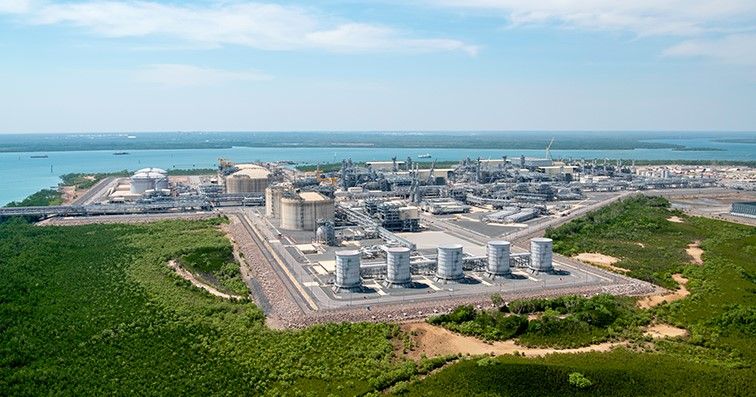🗡️ Who murdered the Murujuga rock art science?
Special Cluedo™️ edition 🔍 Was it Mr Cook or Prof Smith?
Inpex pledged in January 2021 to cut its emissions 30 per cent this decade while it was planning to boost CO2 from Ichthys LNG, which accounts for three quarters of its carbon footprint, by 30 per cent.

When Inpex announced in January 2021 that it would cut its emissions intensity by 30 per cent, it was working to do the opposite at its most significant asset: the Ichthys LNG project in Australia.
Almost a decade ago, Inpex went heavily into debt and bet the house on developing Ichthys despite never before operating a significant offshore asset.
In a world where only the cheapest and cleanest LNG will compete, the Japanese company is saddled with a project unsuited to the times that produces over three-quarters of its carbon emissions (calculation below).
Inpex chief executive Takayuki Ueda said reduced emissions from its upstream operations were essential to its “response to climate change and transition to a low-carbon society.”
The company now plans to cut the carbon emissions per unit of energy it produces by 30 per cent by 2030 and achieve net-zero emissions by 2050.
As Ueda spoke, work was underway to install fuel-hungry offshore compressors at Ichthys and develop the Plover field with twice the carbon dioxide content of current production from the Brewster field.
When Inpex sanctioned the project in 2012, the installation of compressors to maintain gas flow to the LNG plant near Darwin was planned for the twelfth year of production and would increase emissions by seven per cent.
McDermott and Saipem are currently designing the compressor modules and a final investment decision is expected in late 2021. Boiling Cold understands compression will start in 2025 or 2026, about four years earlier than the original plan.

Inpex’s next step to maintain production from its $US45 billion project will be developing the Plover field with a CO2 content of 17 per cent. Gas for the current Brewster field contains eight per cent CO2.
It is understood Inpex plans to commit to drilling up to 10 wells into Plover in two years and start production in about 2027, about six years earlier than the plan when the project was sanctioned.
The additional CO2 will flow to shore to be extracted and vented to the atmosphere, as happens now.
Ichthys LNG is currently more carbon-intensive than any other Australian offshore project.

When production from Plover peaks in the 2030s, emissions will be more than 30 per cent higher than current rates.
Inpex needs to maintain Ichthys production as the company depends on it.
In 2019 Daniel Toleman, an analyst with energy consultancy WoodMackenzie, said Ichthys accounted for about 70 per cent of the company’s value.
Unfortunately for Inpex shareholders, the company had multiple setbacks on the first large project it operated.
Costs blew out 32 per cent from $US34 billion to $US45 billion, production started two years late, and there are ongoing disputes over construction costs worth well over $US1 billion.
The earlier than planned installation of offshore compression and development of the Plover field indicates the original Brewster field is not performing as well as expected.
The latest problem for Inpex’s Ichthys investment is the rapid escalation since the pandemic started in corporate awareness of the need to respond to climate change urgently.
When Inpex sanctioned its largest-ever investment in January 2012, it is unlikely management foresaw the Japanese Government committing to net-zero emissions by 2050 or the likelihood of the market discounting high carbon intensity LNG.
Inpex is tightly tied to the Japanese Government that owns about 20 per cent of the company and has a golden share that gives it a veto over major transactions and board membership.
Japanese Prime Minister Shinzo Abe visited Darwin in 2018 for the official opening of Ichthys.
Two and a half years later, Abe’s successor Yoshihide Suga increased Japan’s 2030 emissions cuts target from 26 per cent to 46 per cent on the eve of US President Joe Biden starting his climate summit yesterday.
Times have changed.
In June 2020, Inpex and its Ichthys partners owed $US15.6 billion in project finance loans.
In January, credit rating agency Moody’s described Inpex as highly leveraged due to the debts incurred to build Ichthys and maintained its standalone credit rating of Baa3, indicating a moderate credit risk.
The Baa3 rating, which is one level above junk or non-investment grade, was then increased four notches due to likely support from the Japanese Government in the event of default.
Inpex must hope Japanese Government backing continues and its emissions reduction efforts maintain domestic focus .
As part of its new emissions reduction strategy, Inpex said it would investigate the capture and storage of Ichthys emissions.

Less than three years ago, Inpex said it could not commercially justify carbon capture and storage at Ichthys.
Now the costly and so far unreliable technology is central to its efforts to reconcile increasing emissions from its primary production asset with a need to reduce corporate emissions.
Boiling Cold asked Inpex what actions it was taking to reduce emissions from Ichthys and whether any measures would be sanctioned before it committed to the CO2-rich Plover field. No response was received.
Calculation of Ichthys share of Inpex reported emissions.
Main image: Ichthys Explorer central processing facility off the Western Australian coast. Source: Inpex
All the info and a bit of comment on WA energy and climate every Friday